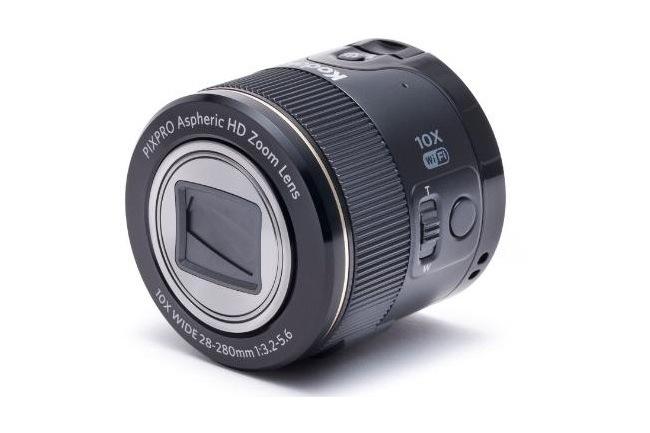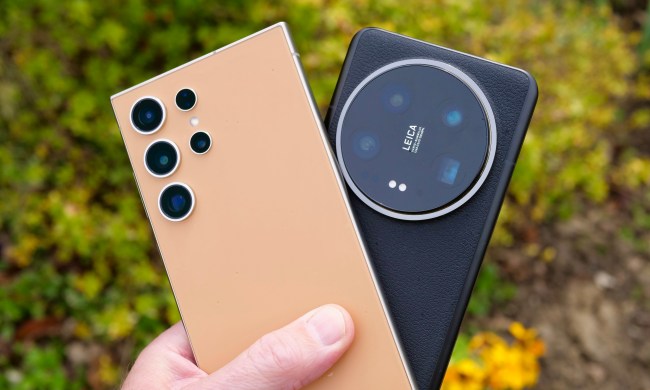
As unique as Sony’s Cyber-shot QX-series of lens cameras is, we’re still not sure how viable it is in the long run. But two companies that think Sony is onto something are Kodak and Vivitar, and they have not only introduced lens cameras of their own (all camera components housed within the lens barrel, minus a display), but have copied Sony’s design down to a T – flattery or rip-off, we’ll let Sony’s lawyers have fun with that one. (As reported by our buddies at the Phoblographer, via Photo Rumors.)
First up, the Smart Lens is one of the new Pixpro products from Kodak. But it isn’t the Kodak of yore you remember: As Kodak was shedding most of its consumer business during bankruptcy, the company signed a licensing agreement with JK Imaging, which will sell Kodak-branded cameras. Back to the cameras: Like Sony’s QX, there are two versions, the SL10 (shown above) and SL25, and both will go on sale in the spring (unless Sony has something to say about it). The SL10 ($199) has a 10x optical zoom, microSD card slot, 1080p video capture, and Wi-Fi; the SL25 ($299) has a 25x optical zoom. If the camera didn’t say Kodak on it, we would have easily mistaken it for one of Sony’s at first glance.
Vivitar, which is one brand licensed by Sakar (another being Polaroid), also has a new lens camera, the Vivicam IU680. While there are some similarities, the IU680 tries to one-up Sony’s concept by using interchangeable lens and sensor modules. According to Photo Rumors, unlike the Kodak products, the IU680 is just a prototype and no real specs or details have been announced. (Sakar recently was banned from selling the Polaroid-branded iM1836 because it infringed on Nikon’s design patent; it will be interesting to see how Sakar plans to proceed with this one.)

Of course, we can’t make any assumptions about performance and quality, but judging from our experience with these types of budget cams (and what we’ve seen from Sakar’s Polaroid-branded gear), we wouldn’t say they match Sony’s QX in those areas. It’s also clear that Kodak’s return to digital cameras is purely in name, not so much about introducing new technologies or concepts. There’s no indication that these products will expand the category Sony created, but, if they actually hit store shelves, you have some alternatives.

(Vivitar image via Photo Rumors)


